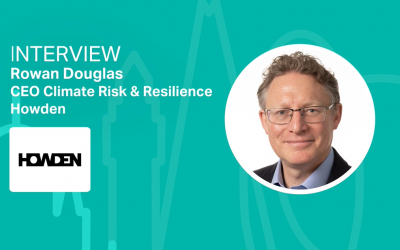CDP - Acting on climate data could deliver up to $21 for every $1 invested
Unlocking the Disclosure Dividend: Acting on climate data could deliver up to $21 for every $1 invested

- New analysis finds $33.1M in environmental opportunities per company vs. $4.6M in costs to realize them – a 7x return
- Almost two-thirds (64%) of companies identified opportunities from environmental action – and of those, 12% unlocked a staggering $4.4 trillion in opportunity value in 2024 alone
- Opportunities from environmental action vary around the world – $73 million per company in Japan, $15 million in USA and $10 million in China
London, 06 August 2025: Companies stand to gain up to 21 times return for every dollar invested in physical climate risk mitigation, according to new data-driven analysis from CDP, the global independent environmental disclosure platform.
As climate-related disasters intensify, the financial cost of inaction is rising — projected to reach $38 trillion annually by 2050. Against this backdrop, the economics of disclosure are clear: companies that measure and manage environmental risks are better positioned to unlock the ‘disclosure dividend’ – reaping tangible financial returns from climate action.
Drawing on analysis from disclosures of nearly 25,000 companies in 2024, CDP’s new report, The 2025 Disclosure Dividend, reveals that every $1 spent on addressing physical climate risks could deliver a return of up to $21 for some firms, with an average return of up to $81. The study also found that a median $33.1 million worth of opportunities per company could await firms that take environmental action, for just $4.6 million in costs to realize them.
Disclosure remains a critical enabler helping businesses surface material risks and chart credible action. The vast majority (90%) of large companies disclosing to CDP already have a process for identifying and assessing their environmental dependencies, impacts, risks and opportunities or intend to do so within the next two years – and close to half (43%) of large corporates reported having a climate transition plan in place.
Yet the multiplier effect comes from taking swift action on the insight. Almost two-thirds of companies (64%) identified environmental opportunities – and of those, 12% unlocked a staggering $4.4 trillion in opportunity value in 2024 alone. The quantified opportunities yet to be realised represent another $13.2 trillion in potential upside.
Companies in Japan and Canada are identifying the largest environmental-related financial opportunities. Based on median values, Japanese firms identified $73 million in potential gains per company, followed closely by Canada at $72 million. Those in the USA identified just $15 million worth of opportunities, while Chinese firms perceived $10 million worth of gains.
While the disclosed value of opportunities varies greatly and may be influenced by factors such as thresholds used to define a substantive opportunity, methodological choices, and commercial sensitivity, the analysis confirms that companies in nearly all sectors and regions stand to benefit from acting on environmental opportunities.

Fig.1) A majority of companies see opportunities arising from combating climate change.
“The economics behind disclosure are becoming clear – data driven decisions help to manage business risk and unlock opportunity” said Sherry Madera, CEO of CDP.
“Disclosure is the foundation of action. Our data shows that companies that measure and manage their environmental impacts not only future-proof their operations but also unlock tangible financial and strategic gains. The disclosure dividend is real – and the business case for seizing it has never been stronger.”
The report highlights a growing shift: disclosure is no longer just a transparency exercise; it's becoming an economic imperative. As the financial case for climate action strengthens, companies that act on their disclosure data stand to unlock measurable returns. The dividend lies not simply in awareness, but in translating insight into impact.
Notes to the editor: Methodology
1The median benefit-cost ratio is based on companies’ self-reported estimates of the potential financial impact of physical climate risks over medium and long-term horizons (whichever is higher), and the associated response costs. Figures vary widely across companies within the same industry, likely due to differences in geography, size, risk exposure, and methodologies.
For more information, or to arrange interviews, please contact:
- Samika Meshram-Jasinski (samika.meshram@cdp.net)
- George Bush (george.bush@cdp.net)
About CDP
CDP is a global non-profit that runs the world’s only independent environmental disclosure system. As the founder of environmental reporting, we believe in transparency and the power of data to drive change. Partnering with leaders in enterprise, capital, policy and science, we surface the information needed to enable Earth-positive decisions. We helped more than 24,800 companies and almost 1,000 cities, states and regions disclose their environmental impacts in 2024. Financial institutions with more than a quarter of the world’s institutional assets use CDP data to help inform investment and lending decisions. Aligned with the ISSB’s climate standard, IFRS S2, as its foundational baseline, CDP integrates best practice reporting standards and frameworks in one place. Our team is truly global, united by our shared desire to build a world where people, planet and profit are truly balanced. Visit CDP.net or follow us @CDP to find out more.






